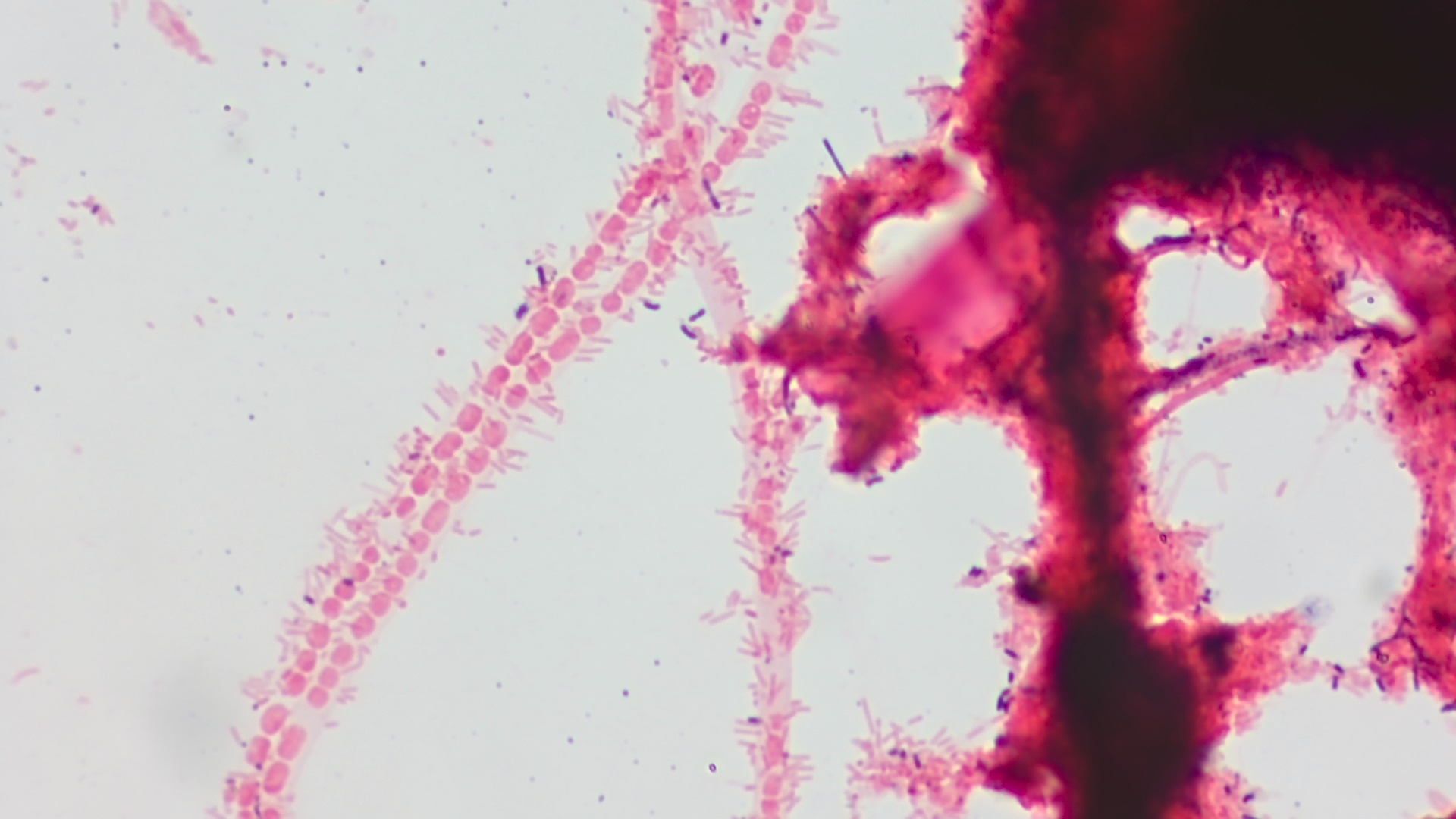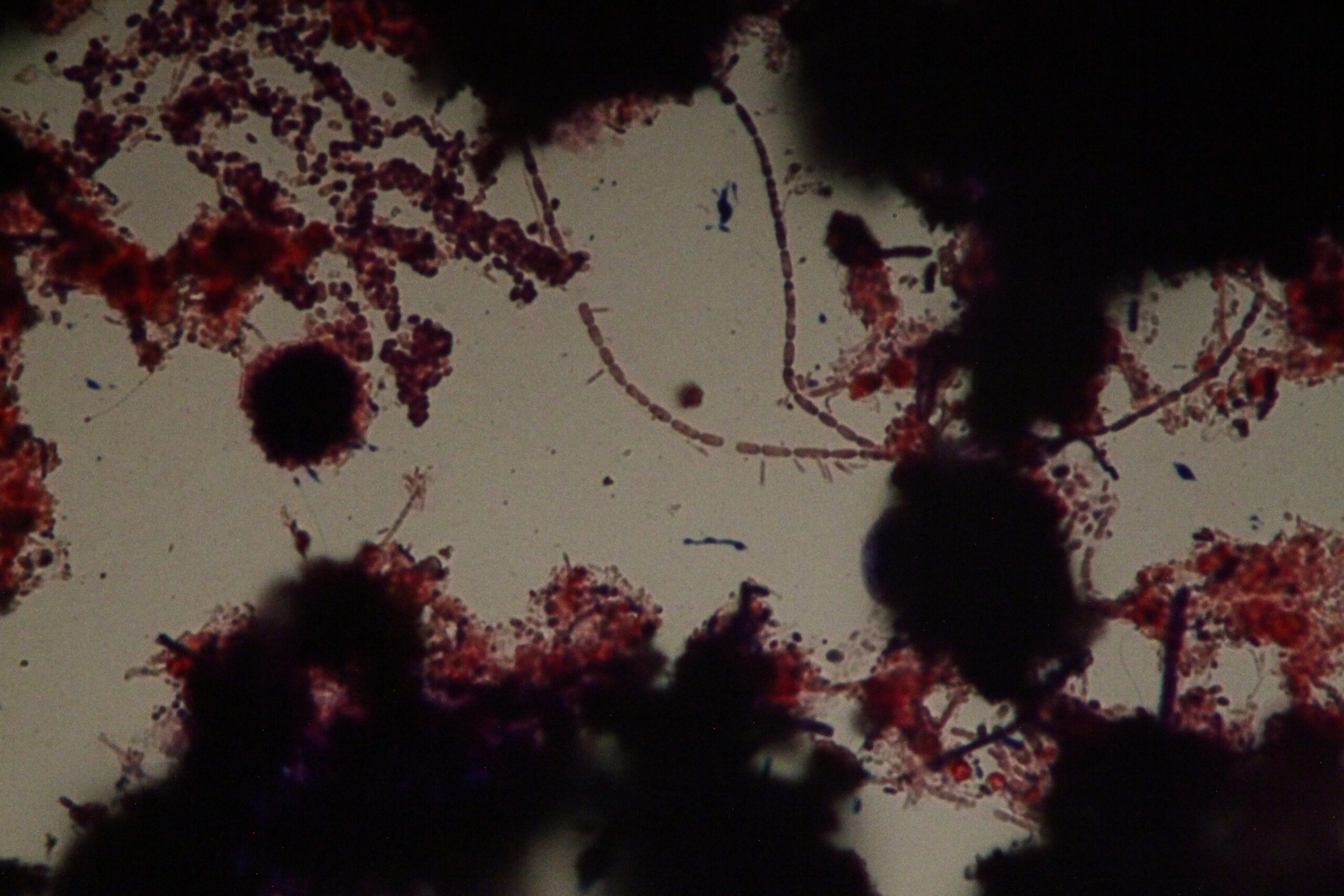Type 1701
This type is very rare in municipal sewage plants, but it is common in industrial plants with starch-rich wastewater, where it causes bulking sludge.
Morphology:
| Filament position: | on the flakes or on edge of flake |
| Branching: | occasionally untrue branches |
| Movement: | none |
| Growth habit: | slightly curved |
| Aufwuchs: | partially present |
| Constrictions: | clearly visible |
| Sheath: | present |
| Transverse walls: | identifiable |
| Cell form: | rod-shaped; disc-shaped at the end of filament |
| Length of filaments: | < 200 µm |
| Filament diameter: | 0.7 – 0.9 µm |
| Gram staining: | negative |
| Neisser staining: | negative |
| Special features: | if the septa are not identified, there is a risk of confusion with Type 1851 (low-load filament). If the cells are not identified, there is a possibility of confusion with Sphaerotilus natans. |
Factors promoting growth:
- high sludge load > 0.2 kg BSB5 / kg TS * d
- wastewater with high concentration of carbohydrates (starch)
- low concentrations of oxygen
- full mixing of activation tank
- temperature > 15 °C
Countermeasures:
- reducing the sludge load der Schlammbelastung
- increased concentration of oxygen
- addition of ferrous precipitants (FERRACLAR CLASSIC, FERRAPLUS, FERRAL FD 1600, Contisolf, Contisolf Winter)


